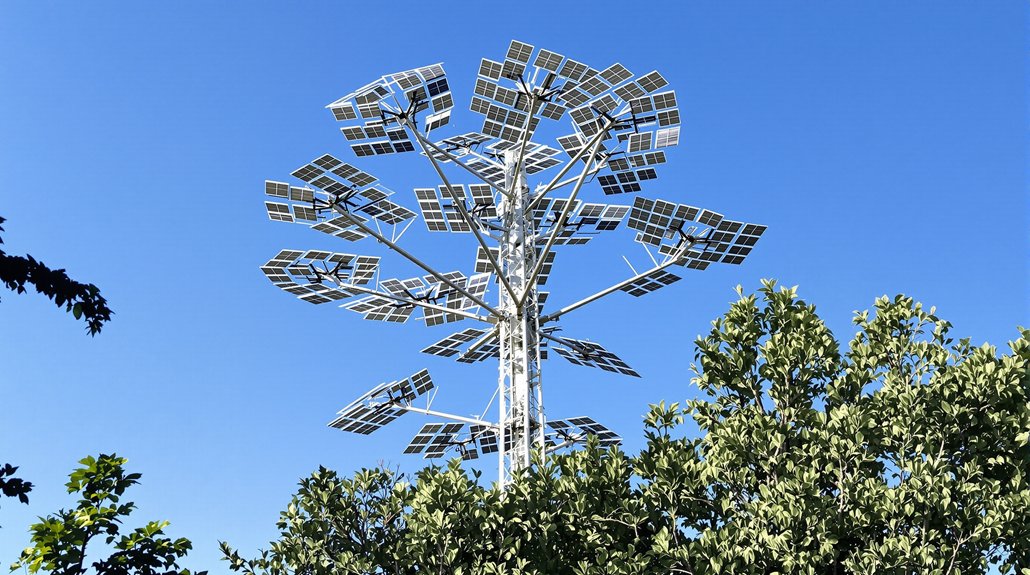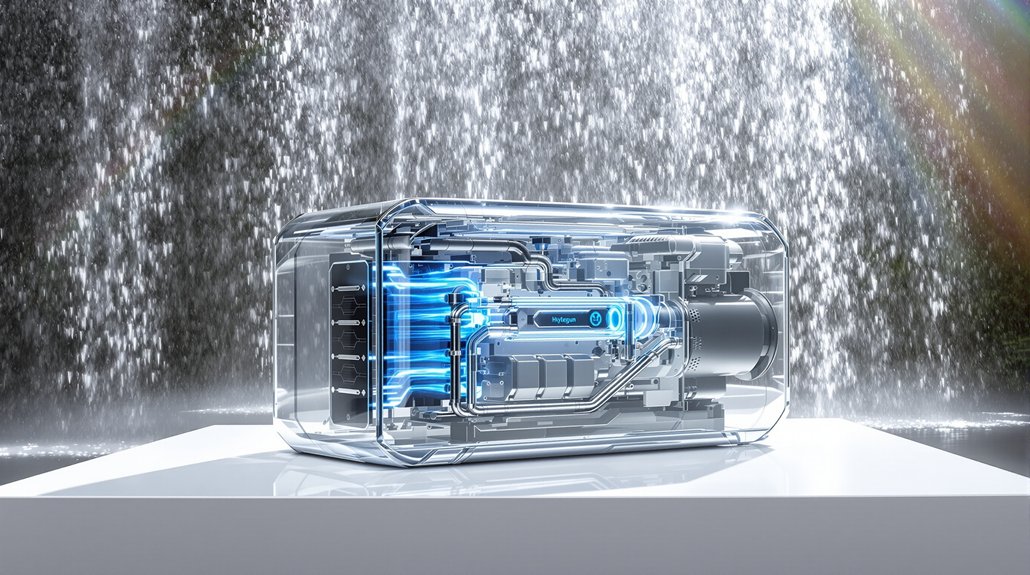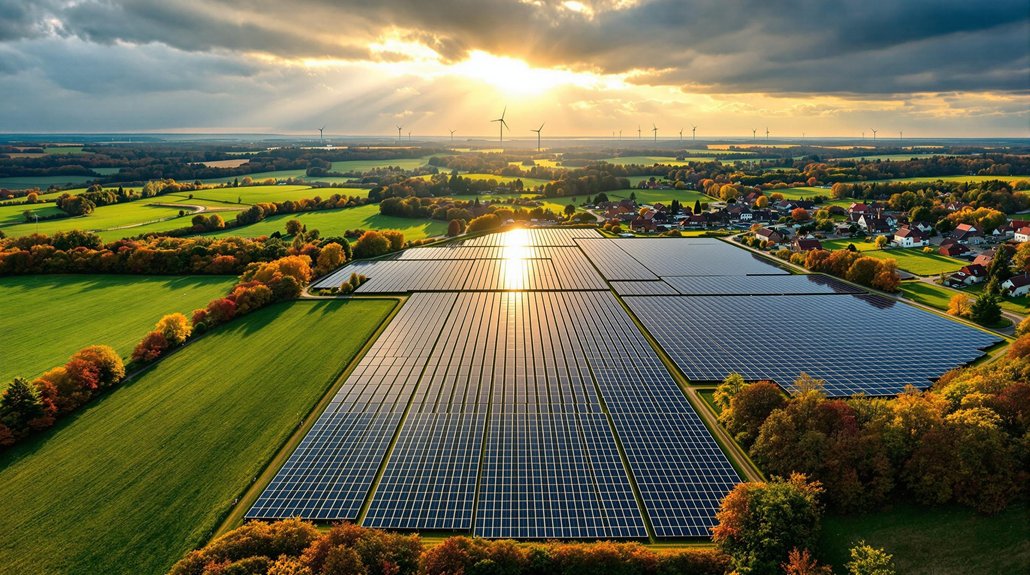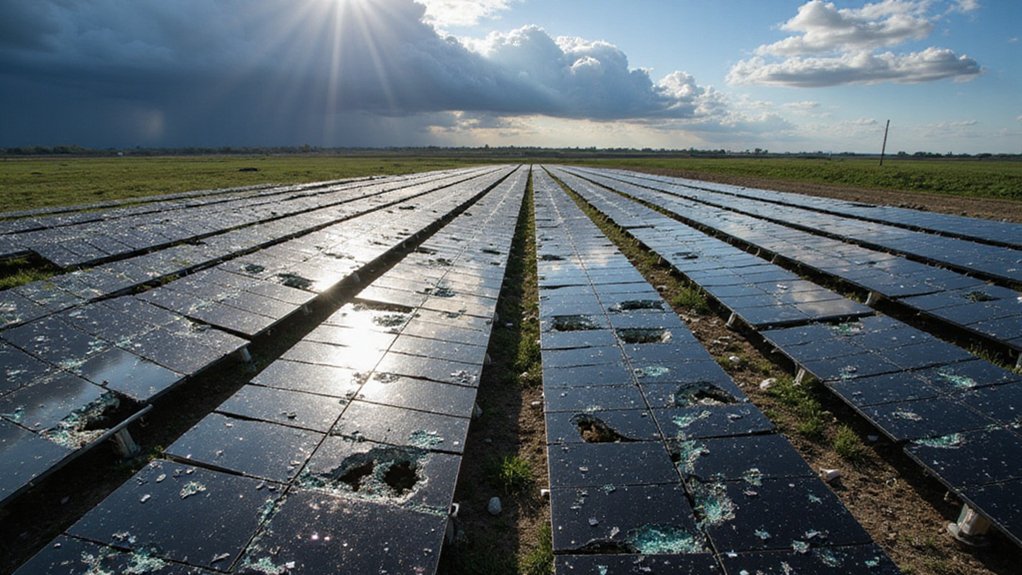What if solar panels could look like trees instead of flat sheets? Engineers have created innovative solar structures that mimic natural trees, with photovoltaic panels arranged like leaves on branches. These solar trees are changing how we think about renewable energy in both urban and natural settings.
Tree-shaped solar panels feature a central trunk with branches extending at various angles, capturing sunlight from different positions throughout the day. Unlike traditional flat solar arrays that require clearing large areas of land, these vertical structures need minimal ground space. Tests show they preserve up to 99% of existing forest cover, compared to just 2% with conventional installations.
Solar trees maximize sunlight capture while preserving natural ecosystems—a stark contrast to land-clearing conventional panels.
The vertical design makes these solar trees perfect for cities where space is limited. They can be placed along roads, in parks, or other areas without disrupting the surrounding environment. Many models can rotate or tilt to follow the sun, increasing their daily energy production.
These innovative structures generate comparable energy to flat panels while offering additional benefits. The branching design allows panels to be positioned at multiple heights and angles, maximizing sunlight absorption. Some solar trees can match one-megawatt capacity with fewer installations than conventional solar plants. Some hybrid versions even include small wind turbines to provide power in changing weather conditions.
The environmental advantages are significant. By minimizing deforestation, solar trees help maintain biodiversity and ecosystem services. They provide shade that reduces urban heat islands and supports the growth of plants beneath them. This approach allows carbon-capturing vegetation to coexist with clean energy production.
Solar trees also enhance public spaces. Many designs incorporate benches, phone charging stations, Wi-Fi hotspots, and lighting. They’ve become gathering places in urban areas while promoting renewable energy awareness. These installations benefit from government incentives that encourage utilities to adopt innovative green energy solutions.
Advanced materials and AI-driven energy management systems make these structures increasingly efficient. Their modular nature allows for easy expansion as energy needs change. With their ability to blend technology with nature, tree-shaped solar panels represent a promising direction for sustainable energy development.
References
- https://www.designboom.com/technology/aeroleaf-hybrid-new-world-wind-turbine-tree-solar-panels-green-energy-11-14-2023/
- https://www.zmescience.com/feature-post/technology-articles/sustainability/renewable-energy/solar-trees-could-save-forests-from-deforestation-while-generating-the-same-power-as-solar-farms/
- https://www.treeplantation.com/solar-trees.html
- https://solarbotanictrees.com
- https://a1solarstore.com/blog/solar-trees-branching-out-from-traditional-solar.html








